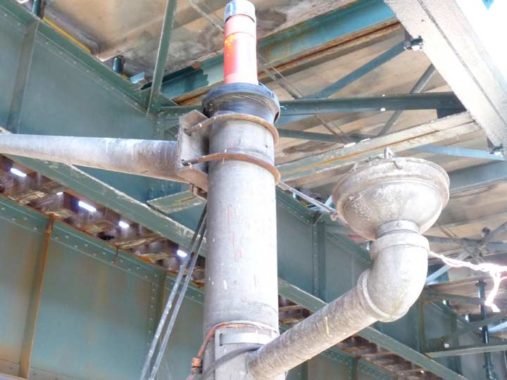Fire alarms have been a feature on NYC streets since the late 1800s, and methods of marking them, first to passing horse-drawn coaches and pedestrians up to moving vehicles has evolved over the years. At first, alarms themselves had tall shafts topped by electric bulbs covered by red globe illuminators.
As time went on this method persisted, but NYC also began to mount the indicator lamps on nearby lampposts and telephone poles. The red globe lights were mounted on short ornamental brackets or scrolled masts. Glass proved breakable and fragile, and beginning in the 1940s, the bulbs shone through orange plastic reflectors that later evolved into cylinder-shaped orange reflectors.
When octagonal-shafted lampposts appeared on the scene in the 1950s, the ornamental brackets evolved into simple J-shaped pipes that retained the somewhat lengthy orange cylinders. I was inspired to write about this today because of the above sample on Columbus Avenue, which shows a rare variant of the lengthy orange shaft, a shallow, pale yellow version. These remained relatively rare until all were decommissioned in the early 2000s.

Here’s an up-close look at a former alarm lamp bracket at Broadway and 31st Street, Astoria, and its replacement, a thin cylinder with a small red light. They’re usually mounted on the streetlamp fixture, but the DOT had to get a little creative under the elevated train and put it at the top of the shaft.
A little too much information, but I do this so no one else has to in this, your Forgotten New York.
Check out the ForgottenBook, take a look at the gift shop, and as always, “comment…as you see fit.”
2/1/19
